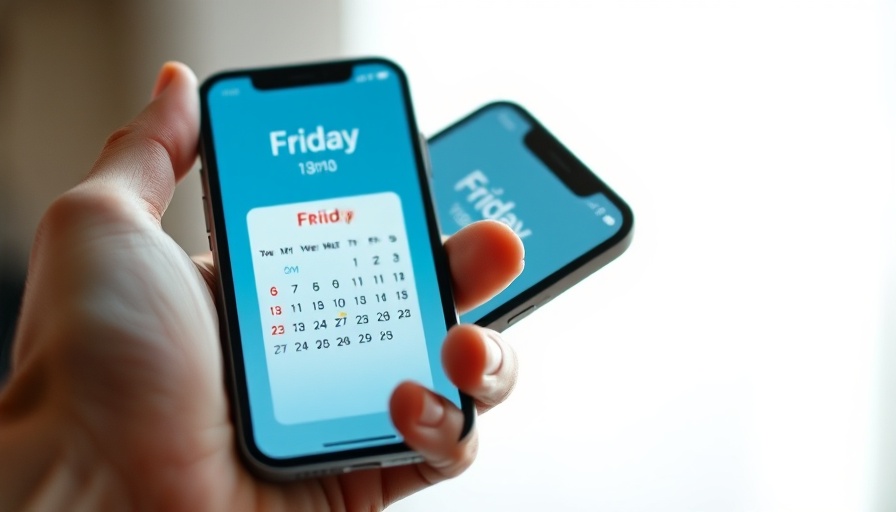
Finding Focus: A New Way to Approach Productivity for ADHD
Are you in your early morning grind, coffee in one hand and a daunting list of tasks in the other? Many women teachers and education leaders find themselves drawn into a common trap that disrupts their productivity—getting lost in the whirlwind of email and calendar notifications instead of engaging in their most meaningful work. This struggle is particularly poignant for those diagnosed with ADHD, where overwhelm can quickly spiral out of control. But understanding productivity with ADHD requires us to redefine what it means to truly "get things done."
The True Meaning of Productivity with ADHD
What does it truly mean to be productive—especially for someone with ADHD? The traditional view is that productivity equates to checking items off a list at lightning speed. Yet, for many, this can lead to feelings of inadequacy, as you may finish a day feeling like nothing worthwhile was actually accomplished. Instead, consider reframing productivity as engaging in activities that align with your core values and bring meaning to your life.
Visualizing your days without the burden of constant overwhelm is liberating. When you begin focusing your time and energy only on what is genuinely essential, you create an environment where real productivity can flourish. Feeling accomplished isn't simply about quantity; it’s about purpose. Remember, your self-worth shouldn't hinge on the number of tasks you complete, but rather on the intention behind your daily choices.
Start with a Weekly Review Practice for Focused Intent
As you embark on this journey toward enhanced productivity, begin by implementing a weekly review practice. This is crucial for decision-making and better task organization, particularly if your day-to-day is hectic. David Allen’s principles from "Getting Things Done" remind us that many individuals struggle to be productive because they fail to maintain a clear inventory of their commitments.
Dedicate time each week to assess your tasks and priorities, relieving the pressure of daily overwhelm. Notably, ADHD can lead to external distractions that exacerbate stress and hinder focus, making this weekly review an excellent tool for reclaiming control over your time and efforts.
Strategize Your Morning Routine for Greater Clarity
How do you typically kickstart your day? If your answer involves diving straight into emails or urgent tasks, it’s time for a change. Starting your day with your most important work, rather than reactive tasks like email management, positions you for nighttime reflection on a day well spent.
Consider using techniques such as the Pomodoro Technique, breaking your work into intervals, allowing necessary breaks that combat the tendency of ADHD to lead to distractions. This active engagement strategy not only enhances focus but also reduces the feelings of chaos often associated with managing ADHD.
Incorporating Mindfulness into Your Day
As you work towards establishing a productive day, incorporating mindfulness practices can be immensely beneficial. Taking a moment each day to step back and evaluate your mental state can significantly reduce stress and facilitate clear decision-making. Meditation, even if just for a few minutes, or a mindful walk, can reset your focus.
Mindfulness trains your brain to approach challenges calmly, creating a significant mental shift that can help you move forward effectively. For women in teaching positions—where emotional labor is a daily challenge—taking time for mental health can translate into greater effectiveness both personally and professionally.
What Would You Do with More Control Over Your Day?
Embracing a more structured approach while balancing compassion towards yourself can open the door to new opportunities. Imagine ending your day feeling satisfied, knowing you’ve worked towards your goals, rather than just keeping busy. Practice is key; over time, making these adjustments will cultivate a productivity rhythm that honors your needs and your drive.
Now is the moment to take ownership of your day, prioritize what matters most, and move through your responsibilities with a sense of purpose—free from the chains of overwhelm. Yes, if you start today with this insight, you can achieve not just a busier day, but a genuinely productive one, tailored to who you are and maybe even leading those around you towards a more mindful way of living.
Take a step toward transformative change today. Reflect on this article, jot down your thoughts about how you approach productivity, and implement these insights into your routine. Setting intentions with kindness will pave the path for a focused, productive you.
 Add Row
Add Row  Add
Add 




Write A Comment